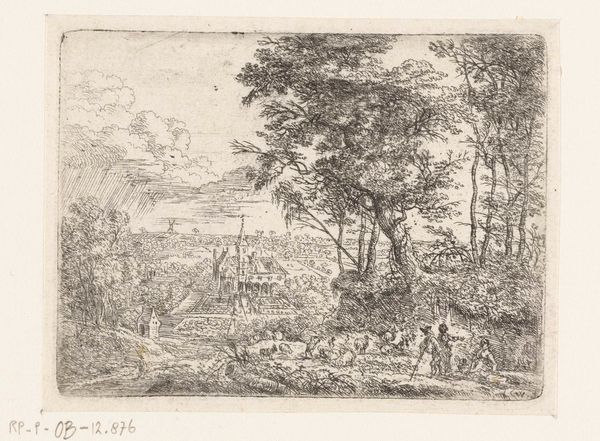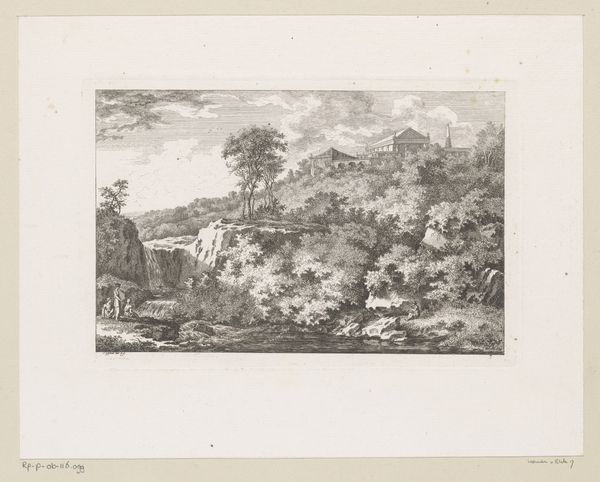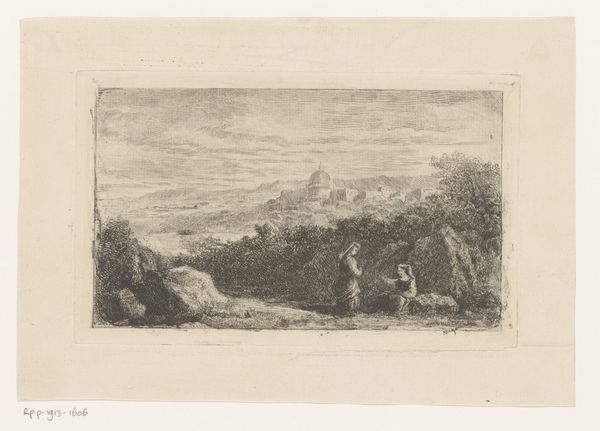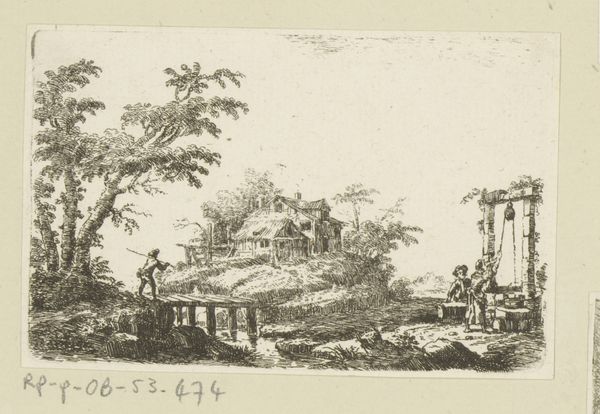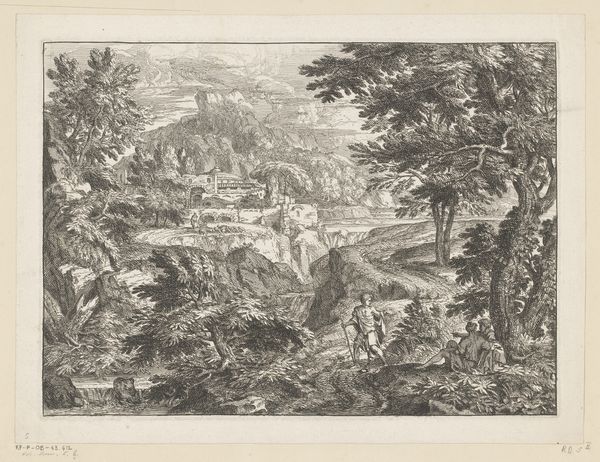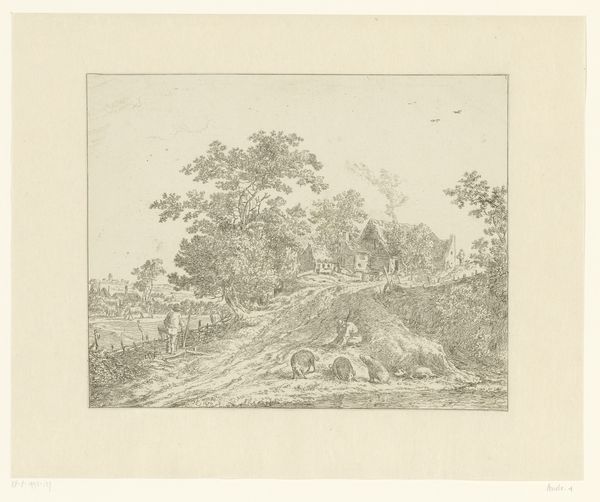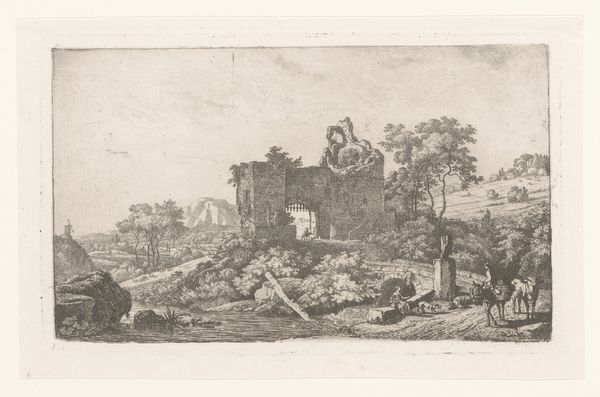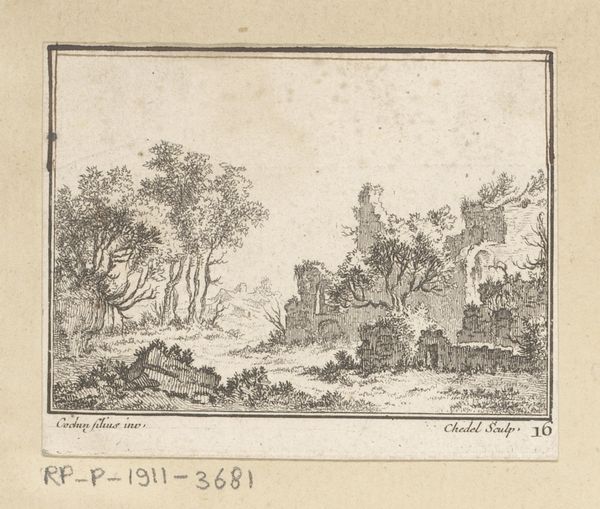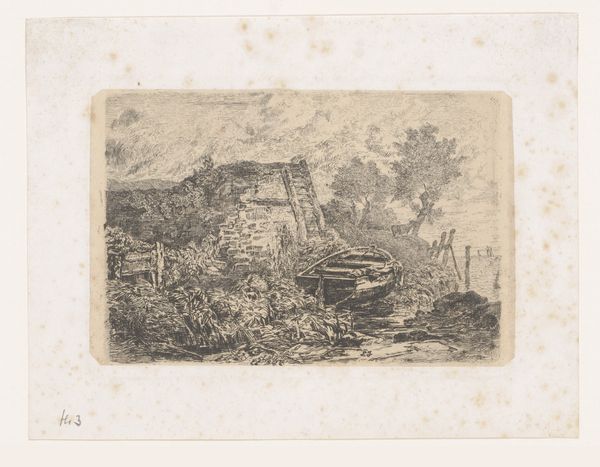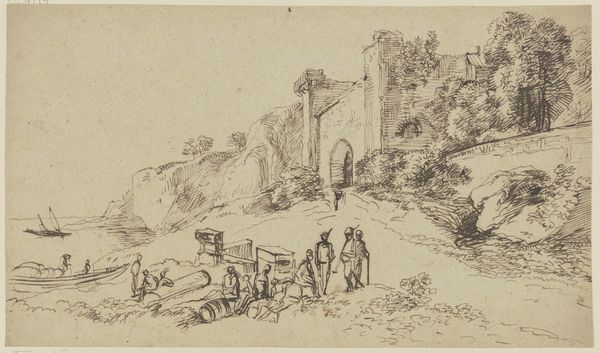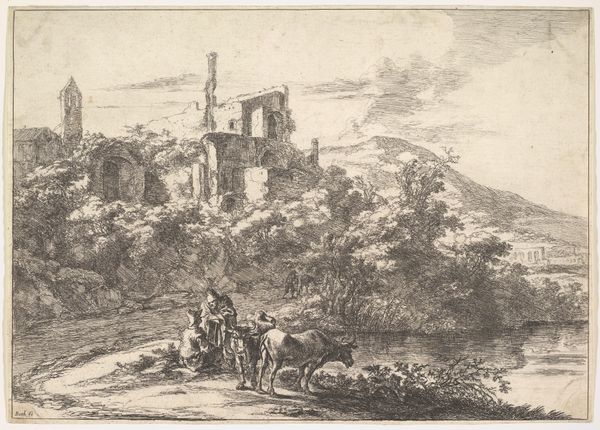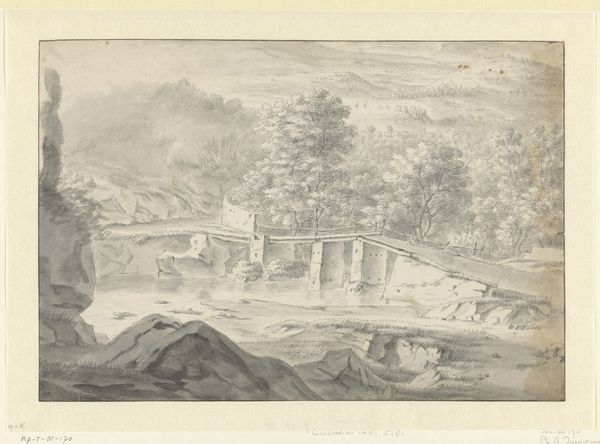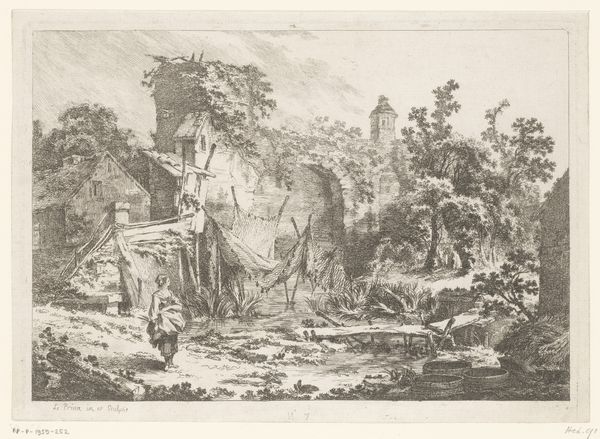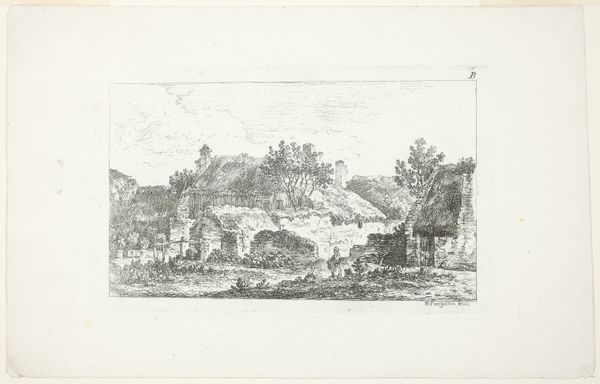
print, etching
#
neoclacissism
# print
#
etching
#
old engraving style
#
landscape
Dimensions: height 100 mm, width 157 mm
Copyright: Rijks Museum: Open Domain
Carl Wilhelm Weisbrod created this landscape with shepherds and ruins in an etching. The image presents a pastoral scene in which shepherds lead their animals past ancient ruins. Made during the 18th century, this print reflects the period's fascination with classical antiquity. The ruins evoke the grandeur of past civilizations, a popular theme in European art at the time. In much of the art from this period, the ruins would be a reminder of the transience of human achievement. The shepherds, meanwhile, represent a simpler, more natural way of life, one that is often idealized in contrast to urban complexity. This imagery could be read as a commentary on contemporary society, perhaps critiquing the values of the Enlightenment, like reason and progress, by suggesting an alternative vision of fulfillment. Understanding Weisbrod’s work requires insight into the social and intellectual currents of the 18th century, gained from sources such as period literature and philosophical texts. Through a look at these resources we can develop a deeper understanding of what this artist tried to communicate.
Comments
No comments
Be the first to comment and join the conversation on the ultimate creative platform.
